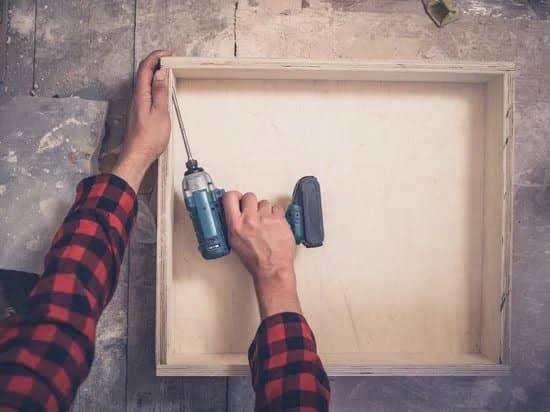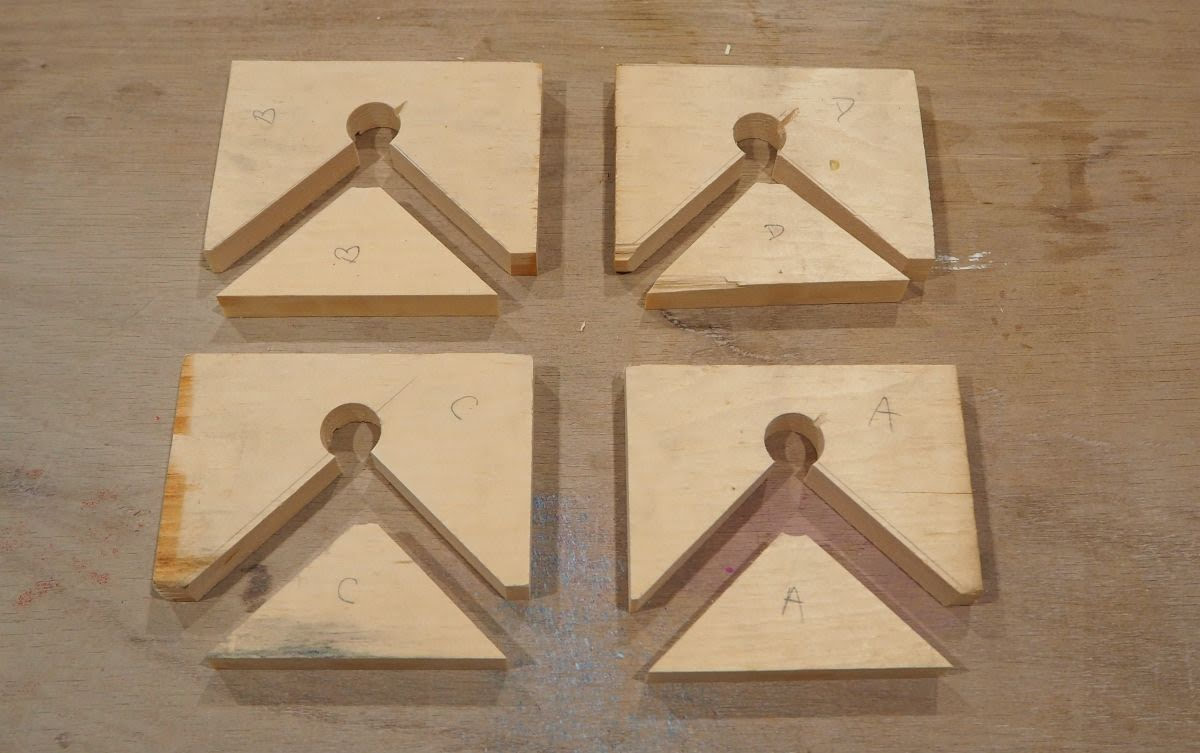Are you a woodworking enthusiast looking to improve the organization and efficiency of your workspace? In this article, we will explore how to organize a rolling tool box specifically for woodworking projects.
Having a well-organized rolling tool box is essential for any woodworker, as it not only streamlines the workflow but also ensures that all the necessary tools and supplies are easily accessible. From choosing the right rolling tool box to sorting and categorizing tools, we will cover everything you need to know to create a functional and organized work space for your woodworking projects.
When it comes to woodworking, having a clutter-free and well-organized work space can make a significant difference in productivity and overall enjoyment of the craft. An organized rolling tool box allows for easy access to tools and supplies, minimizes time spent searching for items, and helps prevent loss or damage of essential equipment. With the right approach to organizing your rolling tool box, you can create an efficient work space that maximizes productivity and creativity.
In this article, we will delve into the important aspects of organizing a rolling tool box for woodworking. We will discuss how to choose the suitable type and size of rolling tool box for your woodworking needs, essential tools and supplies that should be included in the toolbox, as well as tips on sorting, categorizing, labeling, and inventory management.
Additionally, we will provide guidance on maintaining cleanliness and organization within the rolling tool box for different woodworking projects such as carpentry, cabinetry, or woodturning. Whether you are a beginner or seasoned woodworker, improving the organization of your rolling tool box can greatly enhance your woodworking experience.
Choosing the Right Rolling Tool Box
When it comes to organizing a rolling tool box for woodworking, choosing the right one is essential. The type and size of the rolling tool box can significantly impact the efficiency and organization of your workspace. There are several factors to consider when selecting a rolling tool box for woodworking needs.
First, consider the size of the tools you will be storing in the rolling tool box. If you have large power tools or long-handled tools, such as saws or clamps, you will need a larger and more spacious rolling tool box to accommodate them. Additionally, take into account the weight capacity of the tool box to ensure it can support your heaviest tools without compromising its mobility.
In terms of types, there are traditional top-opening tool chests, as well as cabinet-style rolling tool boxes with multiple drawers and compartments. Consider your workflow and how you prefer to access your tools when deciding between these options. The cabinet-style tool boxes are great for organizing smaller hand tools and accessories while keeping everything easily accessible.
Lastly, durability and portability are important factors to keep in mind when choosing a rolling tool box for woodworking. Look for sturdy construction with quality materials that can withstand the demands of a woodworking environment. Additionally, consider features like heavy-duty casters or handles for easy maneuverability around your workspace.
| Factors to Consider | Considerations |
|---|---|
| Size of tools | Ensure it can accommodate large and heavy tools |
| Type | Choose between top-opening chest or cabinet-style with drawers |
| Durability & Portability | Look for sturdy construction and easy maneuverability features |
Essential Tools and Supplies
When it comes to woodworking, having the right tools and supplies is essential for a successful project. Organizing these items in a rolling tool box can make the entire process more efficient and enjoyable. Here are some must-have tools and supplies that should be included in your rolling tool box for woodworking:
- Measuring tools: A tape measure, ruler, and square are essential for accurate measurements and cuts.
- Cutting tools: Include a variety of saws such as a hand saw, circular saw, and coping saw. Don’t forget to add a utility knife and a set of chisels for precise cutting and shaping.
- Fastening tools: Keep a hammer, nails, screws, screwdrivers, drill bits, and a power drill handy for assembling wood pieces securely.
- Sanding tools: Add sandpaper in different grits, sanding blocks or sponges, and an electric sander for achieving smooth surfaces.
- Clamping tools: C-clamps, bar clamps, and spring clamps are necessary for holding pieces together while glue dries or when drilling or sawing.
- Safety gear: Always include safety goggles, ear protection, dust masks or respirators, and work gloves to protect yourself while working with wood.
By including these essential tools and supplies in your rolling tool box for woodworking projects, you can ensure that you have everything you need at arm’s reach to tackle any task efficiently.
Properly organizing these items within your rolling tool box is crucial in maintaining an efficient workspace. Utilizing dividers and small containers can help keep smaller items organized while ensuring larger tools are secure during transportation. Labeling drawers or compartments will also make it easier to locate specific items quickly when needed.
To optimize space within the rolling tool box, it’s also important to consider the frequency of use of each item when deciding where to place them. Tools that are used most frequently should be easily accessible at the top or in front of the rolling tool box, while those used less often can be placed towards the bottom or at the back.
In addition to basic organizational strategies mentioned above understanding how tools are utilized during specific woodworking projects can help you organize your toolbox accordingly based on your needs. Whether you’re working on cabinetry where more precise measuring equipment may be required versus carpentry which requires different types of saws ensure that your toolbox reflects this specific knowledge by being fine-tuned according to project-specific tasks.
By following these tips on how to organize rolling tool box woodworking properly ensures not only easy access speedier assembly but also safety precautions too throughout an extended range of potential tasks.
Sorting and Categorizing
When it comes to woodworking, having a well-organized rolling tool box is essential for a smooth and efficient workflow. Properly sorting and categorizing your tools and supplies not only optimizes space but also saves time by making everything easily accessible. Below are some tips on how to effectively categorize and sort the tools and supplies in your rolling tool box for woodworking.
First, it’s important to group similar items together. For example, place all your measuring tools in one section, such as tape measures, rulers, and squares. Keep all cutting tools together, such as saws, chisels, and utility knives. By grouping similar items together, you’ll be able to quickly locate what you need without rummaging through the entire toolbox.
Secondly, consider the frequency of use for each tool or supply. Keep the most commonly used items within easy reach while placing those that are used less frequently in a separate section of the rolling tool box. This will help streamline your workflow and ensure that the tools you use the most are readily available.
Lastly, consider organizing your tools and supplies based on the woodworking projects you frequently work on. For example, if you predominantly work on cabinetry projects, dedicate a specific section of your rolling tool box to cabinet-making tools. This approach ensures that your rolling tool box is customized to meet your specific woodworking needs.
Implementing these sorting and categorizing tips will help maximize the space and efficiency of your rolling tool box for woodworking projects.
| Tool Category | Organization Tip |
|---|---|
| Measuring Tools | Group all measuring tools together in one section for easy access. |
| Cutting Tools | Consider the frequency of use when organizing cutting tools within the toolbox. |
| Project-specific Tools | Dedicate specific sections of the toolbox to accommodate different woodworking project needs. |
Utilizing Drawer and Compartment Space
Maximizing Drawer and Compartment Space
When it comes to organizing a rolling tool box for woodworking, making the most of drawer and compartment space is essential. This means utilizing every inch of available space to ensure that all tools and supplies are neatly organized and easily accessible. Consider investing in organizers, dividers, and foam inserts to create designated areas for specific tools within each drawer or compartment.
Strategic Layout and Arrangement
To optimize the space within the rolling tool box, it’s important to strategically arrange the tools and supplies in a way that makes sense and allows for easy access. For example, frequently used items should be placed in easily accessible drawers or compartments, while lesser-used items can be stored in harder-to-reach areas. Grouping similar tools together can also make finding what you need much easier.
Creative Storage Solutions
In addition to utilizing the existing drawers and compartments in a rolling tool box, consider using creative storage solutions to maximize space. This may include installing hooks or hangers on the inside of the toolbox lid for hanging smaller tools, or using magnetic strips to keep metal tools organized on the walls of the box. Don’t be afraid to think outside the box when it comes to creating additional storage options within the rolling tool box.
By implementing these strategies for utilizing drawer and compartment space within a rolling tool box for woodworking, woodworkers can ensure that their tools are organized, easily accessible, and ready for any project.
Labeling and Inventory Management
When it comes to woodworking, having a well-organized rolling tool box is essential for a seamless and efficient workflow. But organization doesn’t stop at sorting and categorizing your tools and supplies.
Labeling your tools and maintaining an inventory are crucial steps in ensuring that everything is easily accessible and accounted for. This section will discuss the importance of labeling tools and supplies, as well as how to maintain an inventory to keep track of everything in your rolling tool box.
Labeling your tools and supplies is not only about aesthetics, but it also serves a practical purpose. By clearly labeling each drawer, compartment, or tool holder in your rolling tool box, you can quickly locate what you need during a project. Additionally, labeling helps prevent mix-ups or misplaced items, saving you time and frustration. Consider using durable labels or tags that won’t easily fade or fall off due to regular use.
Maintaining an inventory of your woodworking tools and supplies is another important aspect of organizing your rolling tool box. Keeping track of everything not only helps you identify when any item is missing but also allows you to replenish supplies before they run out.
You can create a simple spreadsheet or use inventory management software to list all the items in your rolling tool box, along with their quantity and condition. Regularly updating this inventory will help you stay organized and prepared for upcoming projects.
In addition to labeling tools and maintaining an inventory, implementing a system for tracking tool maintenance is also beneficial. By recording when tools were last serviced or sharpened, you can ensure that they are always in optimal working condition when needed for a woodworking project.
- Use durable labels or tags
- Create a spreadsheet or use inventory management software
- Implement a system for tracking tool maintenance
Maintenance and Cleanliness
Regular Cleaning and Inspection
To ensure the longevity of your tools and supplies, it is important to regularly clean and inspect your rolling toolbox. Dust, debris, and moisture can accumulate over time, which can lead to rusting or damage. Wipe down the exterior and interior of the toolbox with a clean cloth and a mild cleaning solution to remove any build-up. Additionally, inspect the drawers, compartments, and wheels for any signs of wear or damage.
Proper Tool Maintenance
In addition to keeping the rolling toolbox clean, it is essential to maintain the tools themselves. After each use, be sure to wipe down your tools with a clean cloth to remove any sawdust or residue. Keep cutting edges sharp and blades oiled to prevent rusting. By properly maintaining your tools, you can ensure they remain in good working condition for years to come.
Storage Environment
The environment in which you store your rolling toolbox can also impact its cleanliness and maintenance. Keep the toolbox in a dry area away from direct sunlight and extreme temperatures. This will help prevent moisture build-up and reduce the risk of rust forming on metal tools. Additionally, consider using silica gel packs or dehumidifiers inside the toolbox to absorb any excess moisture.
By following these maintenance tips, you can keep your rolling toolbox in top condition and ensure that your woodworking tools and supplies remain in optimal shape for all your projects.
Organizing for Different Woodworking Projects
In conclusion, organizing a rolling tool box for woodworking projects is crucial for maintaining efficiency and productivity in the workshop. By having a well-organized work space, woodworkers can save time, reduce frustration, and focus more on their craft.
Choosing the right rolling tool box is the first step in achieving an organized workspace, and it’s important to consider the size and type that best fits one’s woodworking needs. When it comes to essential tools and supplies, it’s important to include only the must-have items to avoid clutter and unnecessary weight.
Sorting and categorizing tools and supplies is essential for optimizing space within the rolling tool box. By categorizing items based on their function or frequency of use, woodworkers can ensure that everything is easily accessible when needed. Making the most out of drawer and compartment space is also crucial, as it allows for better organization and prevents tools from getting damaged during transport.
Additionally, labeling tools and maintaining an inventory can help keep track of everything in the rolling tool box, preventing any items from getting lost or misplaced. And finally, organizing for different woodworking projects requires careful consideration of the specific needs of each project, such as carpentry, cabinetry, or woodturning.
By tailoring the organization of the rolling tool box to meet these specific needs, woodworkers can ensure that they have everything they need at hand for any given project. Following these guidelines will help woodworkers maintain a clean and efficient workspace where they can focus on their craft without being hindered by disorganization.
Frequently Asked Questions
How Do I Organize My Tool Boxes?
Organizing your tool boxes can make your work more efficient. Start by sorting your tools into categories based on their use or type. Invest in a toolbox with compartments or drawers to keep everything tidy and easily accessible.
How Do You Fill a Tool Box?
When filling a tool box, consider the tools you use most often and place them in an easily accessible spot. Keep similar tools together to maintain organization and make it easier to find what you need when working on a project.
How Do You Organize Tools in a Workshop?
Organizing tools in a workshop involves creating designated areas for specific types of tools. Utilize pegboards, shelves, or cabinets to store tools in a way that allows easy access and keeps the workspace clutter-free. Consider labeling storage areas to make finding tools even more effortless.

Hi everyone! I’m a woodworker and blogger, and this is my woodworking blog. In my blog, I share tips and tricks for woodworkers of all skill levels, as well as project ideas that you can try yourself.





